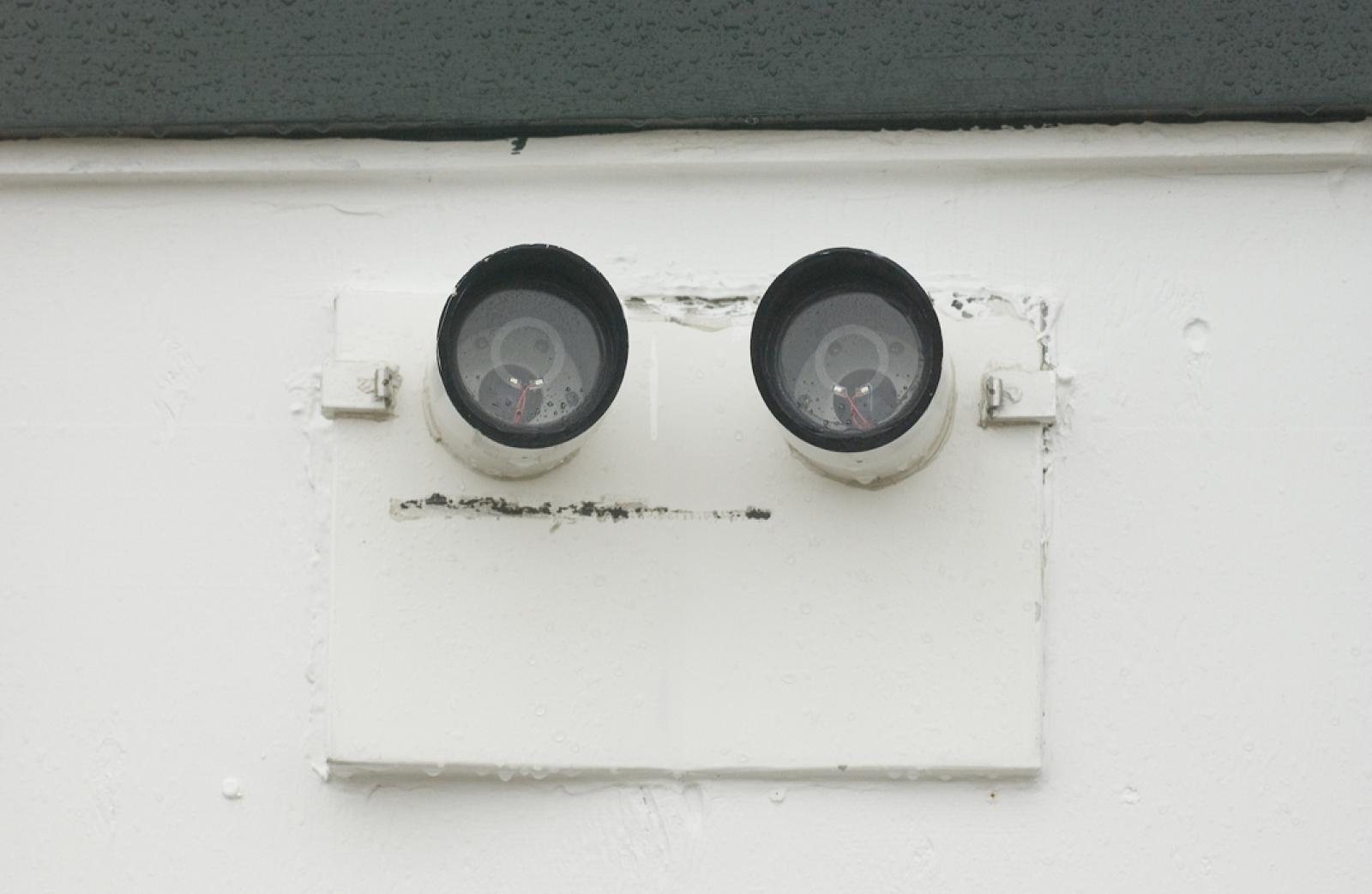For weeks the solemn sound of a foghorn has spread its message across the Vineyard. Day and night, under clear skies, in snowstorms and rain showers, the horn has been heard on the north shore in West Tisbury, across Vineyard Haven, in Oak Bluffs and in Edgartown.
The Nobska Light foghorn in Woods Hole has sounded four times every minute since before Christmas. It finally stopped yesterday, after being fixed.
U.S. Coast Guard senior chief Eric Guerette noticed the problem for the first time on the day after Christmas when he visited the Nobska Light to participate in the Coast Guard’s annual Flying Santa. Mr. Guerette is in charge of the Coast Guard’s Aids to Navigation Team, often referred to as ANT.
Senior chief Stephen Barr of the Menemsha Coast Guard station lives with his family at the West Chop Light, where the Vineyard’s only foghorn is working perfectly — that is, only when there is dense, foggy weather. “I got my first complaint a few days ago. Someone called us and said that the West Chop fog horn was stuck on. We called them back,” Mr. Barr said. He told the caller that the errant foghorn is in fact the one on the Nobska Light.
“We received another call yesterday [Tuesday],” Mr. Barr said.
Of the Nobska Light foghorn, Mr. Barr said: “We hear it all the time. I think with the cold air and with the wind from the north, you can hear it much more than in the summer.”
The Nobska Light and West Chop foghorns are identical devices: ELG-300 foghorns, standard issue for the Coast Guard.
The West Chop foghorn sounds every 30 seconds. It makes one, long three-second sound.
The Nobska Light foghorn makes two two-second blasts every 30 seconds. There is a two-second space between the two blasts. Both horns hit the same low note on the scale.
On a foggy night across the Vineyard and Nantucket Sounds the West Chop and Nobska Light horns perform a duet of sorts. But Vineyarders hear the Nobska Light foghorn more often than West Chop, because the Nobska horn is pointed toward the Vineyard, while the West Chop horn is pointed toward Woods Hole. The West Chop foghorn has a concrete and steel baffle wall behind it to ensure that most of the sound is directed across the water.
The Woods Hole ANT oversees 10 foghorns in the region. They include one on Cleveland Ledge, two on Nantucket, the Buzzards Bay tower, the New Bedford hurricane barrier, Cape Cod Canal Light Six, Race Point and Wood End in Provincetown. They also tend lights for 18 lighthouses and 427 aids to navigation including beacons, jetty lights and harbor buoys.
Two years ago the Nantucket foghorns were automated. Before that, the foghorns were simply turned on and off with a switch at the Coast Guard station Brant Point.
Both Mr. Barr and Mr. Guerette expressed surprise at how few people complained about the errant foghorn. But Mr. Guerette said his office in Woods Hole welcomes any report of a problem. “If anyone notices anything wrong, please call us. We would rather have people call us than have them going to the coffee shop and complain about it,” he said.
Mr. Guerette said the Nobska Light foghorn was sounding continuously recently because a fog measuring device was broken and the Coast Guard was awaiting a part from Baltimore. Until it arrived, for boating safety, the horn was left in the “on” position. As a matter of procedure, he said, whenever an automated foghorn isn’t working correctly, it is turned on.
Several months ago, the fog sensor was upgraded. “Being more modern, it has more needs and wants,” Mr. Guerette said. “The older one was less sensitive. The newer one has problems with light and it is more expensive. When they break, we order a replacement and ship back the broken one.”
He said the sensor looks like a robot’s eyes in a white box. One eye shoots a beam of light into the air, while the second eye detects visible water droplets in the column of light.
“To troubleshoot it, we hook it up to a laptop computer,” Mr. Guerette said. “One of the issues with the new one is that we don’t want the sun to interfere.” He said they set the sensor to go off when visibility drops below three miles.
Yesterday a Coast Guard crew hooked up the new sensor and had it in place by early afternoon.
And so the Nobska Light foghorn is now quiet — until the next time it is foggy.







Comments
Comment policy »